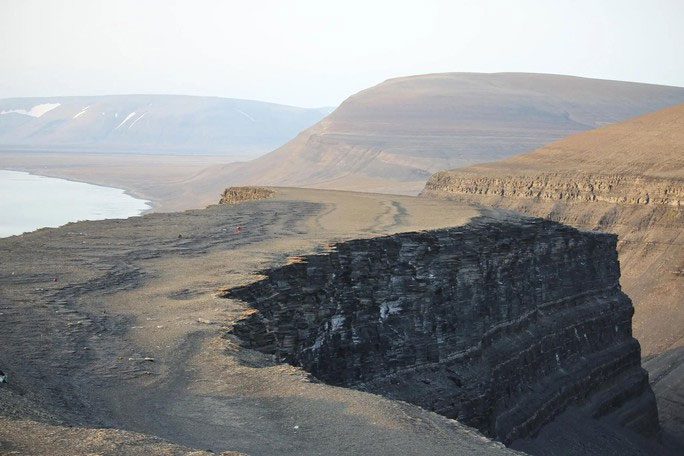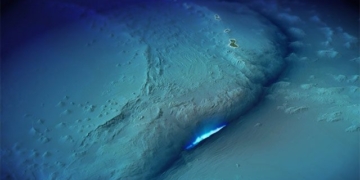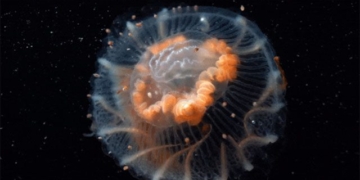Oda, the mysterious “sea serpent” found on a Arctic mountain and forgotten in a museum, has now revealed itself to be a marine reptile that ruled the seas during the age of dinosaurs.
The creature was discovered when Dr. Victoria Sjoholt Engelschion, a researcher at the Natural History Museum in Oslo, Norway, noticed an unusual bluish color on Oda’s bones while she was conducting CT scans of fossilized bivalve specimens from the same area.
X-ray image that revealed Oda’s true form – (Photo: PLOS ONE).
According to the New York Times, Oda had been stored in this museum since 2008 and was mistakenly thought to be a sea serpent due to the compression of its fossil over time, flattening it from a 3D structure into a 2D shape within the 240-million-year-old rock.
Dr. Engelschion and her colleagues from the Natural History Museum and the Museum of Cultural History in Oslo decided to use X-rays to re-examine Oda.
The “eerie light” that the researchers described during the scanning process revealed a horrifying skull, reminiscent of that of a modern crocodile.
They painstakingly “reassembled” Oda, which had been shattered within the fossil matrix, with a crooked spine, a curved tail, flippers, and scattered ribs. The results indicated that besides the crocodile-like head, it had a body resembling that of a dolphin.
This morphology points directly to a group of marine reptiles that dominated the seas for 150 million years, spanning three geological periods: Triassic, Jurassic, and Cretaceous: Ichthyosaur, or “fish lizard.”
This discovery not only provides insights into one of the earliest known ichthyosaurs but also highlights the significant potential of simple X-ray scanning in paleontological research.
Fossilized bones are not actually bone but have been filled with minerals, creating a perfect stone version of the original bone structure. Consequently, barite within the fossilized bones caused them to glow under X-rays, revealing hidden anatomical features.

Plateau on Edgeøya Island in the Svalbard archipelago, Arctic Norway, where Oda was revealed – (Photo: Sofie Bernhardsen).
Oda’s teeth exhibit grooves similar to another ichthyosaur species found across various locations in continental Europe and China, indicating how this species expanded its range during the age of dinosaurs.


















































